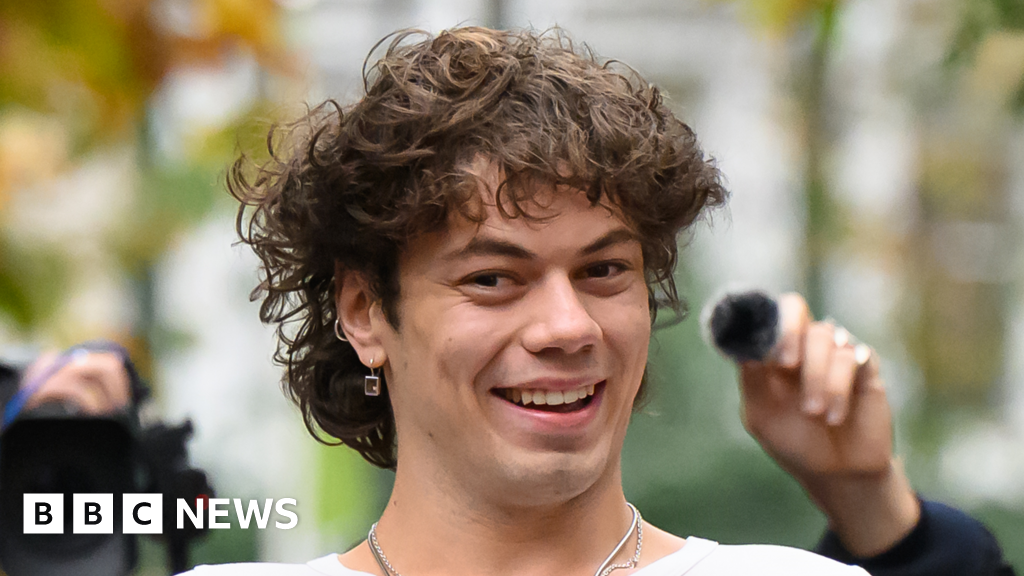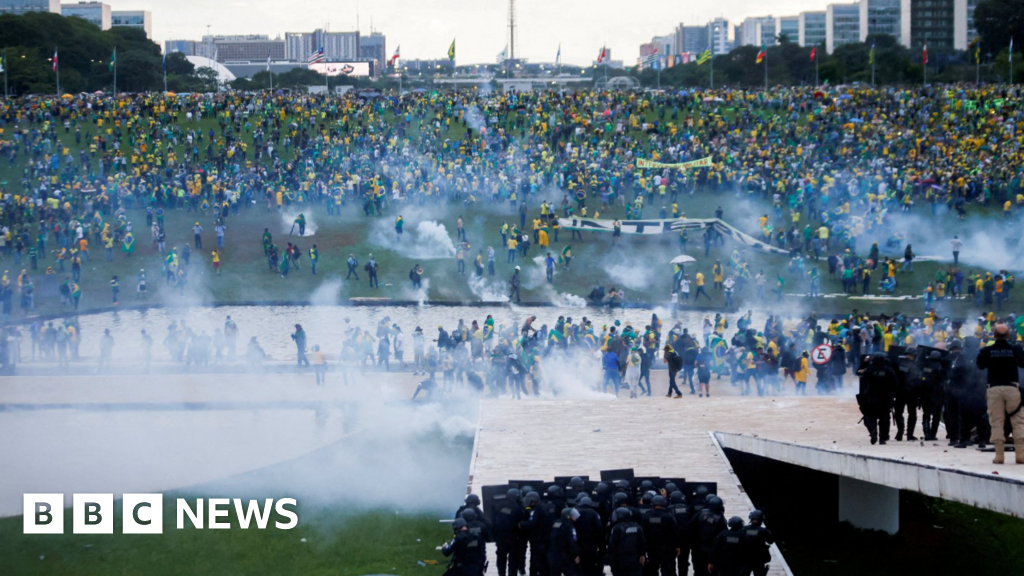ARTICLE AD BOX
By Noele Illien
Zurich, Switzerland
Image source, Kunsthaus Zürich
Image caption,The extended Kunsthaus in Zurich, home to the controversial collection of Emil Bührle
When Switzerland's largest art museum, the Kunsthaus in Zurich, last month opened the golden doors of a vast new extension designed by star architect David Chipperfield, it declared it was the most important home of French and impressionist paintings outside Paris.
However, central to that leap into the top tier of art museums is a notorious private collection, linked to looted art.
Almost one floor of the $220m (£160m) cube-like extension is dedicated to the Bührle Foundation's impressive paintings and sculptures by the likes of Monet, Van Gogh and Picasso.
The collection was put together by Emil Bührle, a controversial figure in his own right, who in the 1940s became Switzerland's richest man by manufacturing and selling weapons to the Nazis.
Image source, Getty Images
Image caption,Bührle built a fortune in the 1940s by selling weapons to the Nazis
Up to his death in 1956, Bührle amassed a collection of about 600 artworks. Roughly a third of those works are managed by the Bührle Foundation and are now on display at the Kunsthaus as part of a 20-year loan.
The rest are said to hang in the homes of his surviving relatives.
Lawfully bought or forced sales?
The Kunsthaus's decision to integrate the 170-piece collection has not just faced a backlash because of Bührle's weapons dealings and more recent revelations of his use of forced labour and child labour in his factories.
As a significant period of Bührle's art spending spree coincided with World War Two, the question has also been raised of whether the artworks were legitimately sold and came into his possession.
Image source, Getty Images
Image caption,Works of art labelled "degenerate" by the Nazis were auctioned off in Switzerland
Shortly after the war Switzerland's Supreme Court forced Bührle to return 13 artworks it deemed to have been looted. Nine of them he bought back.
But historian Erich Keller, who worked on a historical study commissioned by Zurich's government into the weapons manufacturer's past, said the collection still contained several works with problematic provenances.
Image source, Getty Images
Image caption,Cézanne's Paysage was originally owned by a German Jewish couple, forced to flee the Nazis - Mr Keller says the foundation has glossed over this
This included paintings that Jewish collectors were either blackmailed into handing over or forced to sell in order to afford to flee the Nazis and build a new life, he explained.
"These are cases where the art would not have been sold if the Jews had not been persecuted," he said.
He estimates that, of the 170 works on display at the Kunsthaus, dozens fall into this category and the number could be as high as 90. "We need independent research into the art's provenances, and then consider which of these paintings really belong in the Kunsthaus and which need to be given back."
'Flight goods'
Lukas Gloor, the Bührle Foundation's director, feels the matter has been taken out of context. "The approximately 90 works are works for which no complete provenance is known, but for which there is also no reason to assume a problematic provenance," he said.
Mr Gloor says that if one of the collection's works is identified as having been looted, it will be restituted.
However, he says it is less clear cut for artworks that fall into the category of "flight goods" - works sold out of desperation or necessity by people fleeing Nazi Germany.
Image source, AFP
Image caption,Lukas Gloor says there is no reason to believe the 90 works at issue are problematic (file pic)
In such instances, he says: "The Emil Bührle Collection will request in-depth clarification and carry it out itself."
The foundation's reluctance to open the collection's archives to independent researchers has not helped to quell criticism.
'Necessary debate'
Earlier this month Zurich's government announced it wanted independent experts to check the foundation's research on the provenance of the works. In response Mr Gloor threatened to withdraw the collection from the Kunsthaus altogether, according to Swiss newspaper NZZ.
The head of the Kunsthaus, Christoph Becker, said he was not surprised the decision to include the collection had resulted in a heated discussion, acknowledging "the debate is necessary and reasonable".
The question of the art's provenance was a concern for the museum, he insisted: "The Kunsthaus has therefore produced a comprehensive documentation, which is presented in a separate room."
Critics say the documentation room, lined with text panels explaining Bührle's life and his collection's history, downplays controversial aspects of his story and leaves out important details.
"My task was to contextualise the collection," Mr Becker told the BBC, "not to depict Bührle in his entirety as a weapons producer."
On the floor directly below Bührle's is another private collection, smaller in size, and also on loan to the Kunsthaus.
The strikingly colourful works belong to 93-year-old Holocaust survivor Werner Merzbacher, who was himself able to flee Germany to Switzerland as a child. His parents were murdered in a Nazi concentration camp.
Image source, Kunsthaus Zürich
Image caption,The Merzbacher collection features leading artists from Europe's 20th Century movements
Mr Merzbacher believes the museum "should check further in the Bührle Collection to see that the paintings that are shown are rightfully in his possession".
He knew the controversial collection would be under the same roof as his own, but he still wanted to loan his art to the Kunsthaus and make it publicly accessible as a "thank you" to Switzerland.
"I had a difficult youth and without good people in Switzerland I would not be alive," he said. "That overshadows whatever good or bad is in the Bührle Collection."
More on looted art:
Where has this Nazi art gone?

 2 years ago
31
2 years ago
31








 English (US)
English (US)